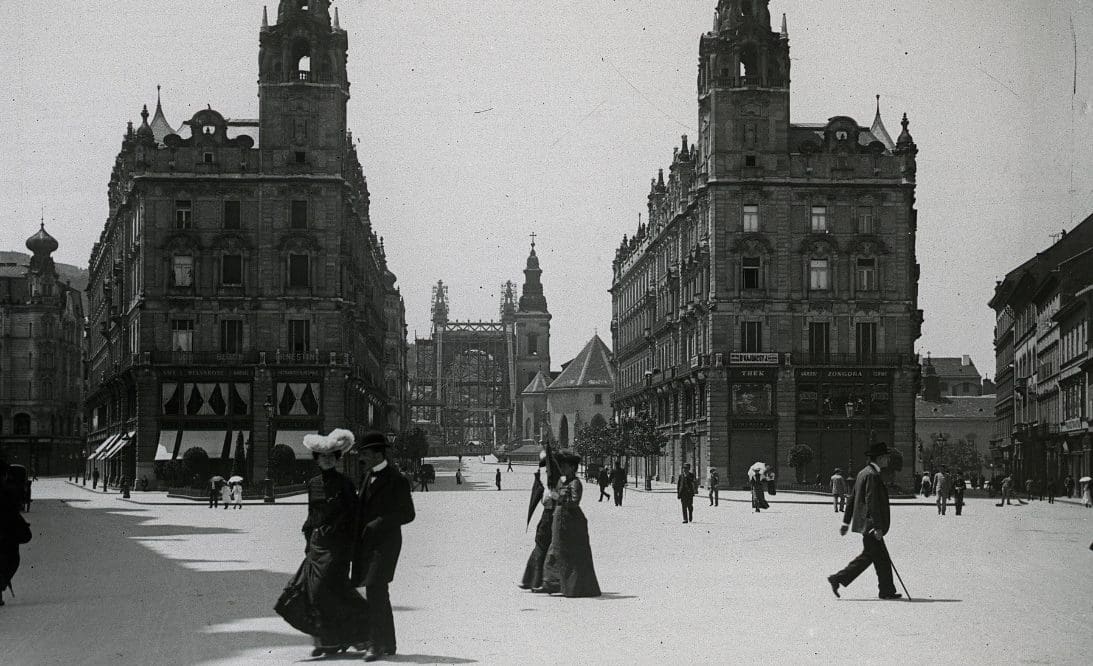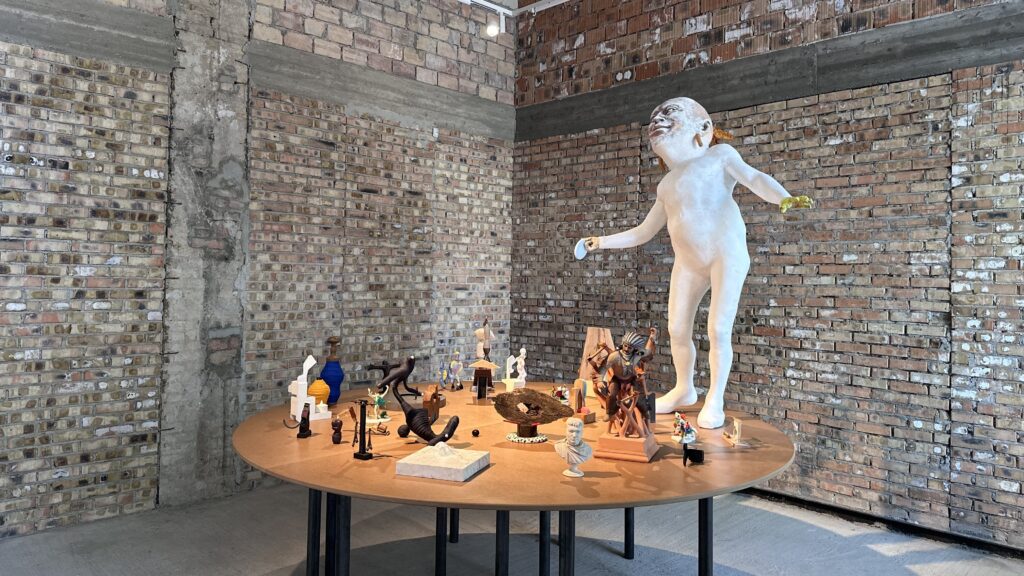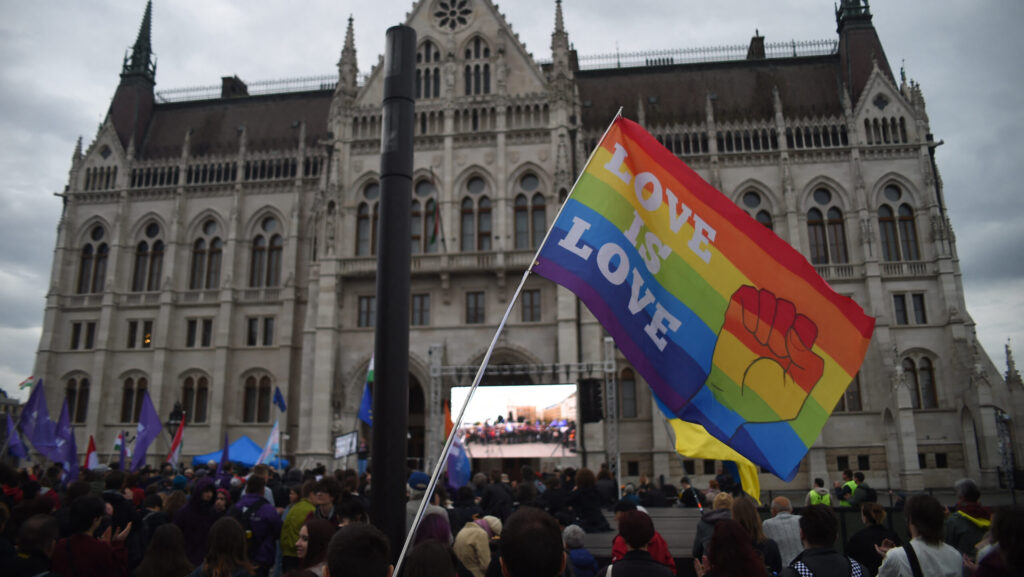‘My house in Budapest / My hidden treasure chest / Golden grand piano / My beautiful Castillo’—the lyrics of the hit from a few years ago by the young British singer-songwriter George Ezra evoke something of the image that the rest of the world, outsiders, have of Budapest. This is an exciting picture to explore, because there are some pretty big differences between what a foreigner visiting or wanting to visit Budapest thinks of the Hungarian capital, and how we Hungarians—residents of Budapest or people from the country—see it. We locals like to criticize the crowds, the stress, the tension in the streets, the so-called Budapest lifestyle and Budapest people, while barely casting our eyes up above street level. A visiting tourist, on the other hand, has an entirely different view of the city, most of all, of the scenery that was imagined and built during Budapest’s golden age in the late nineteenth and early twentieth century. These were dream-like images of a kind, cityscapes that blended the tastes and styles of bygone ages into an elegant, indeed almost rococo bloom of eclecticism.
Because this is Budapest: a big city that dreamed and then built for itself a colourful past during the last decades of the old world, in those final moments before the dawn of modernism.
On the Trail of Lost History
In Budapest’s architectural reality—and in many of its architectural debates—this eclectic, dreamed-up past is what lies at the heart of the matter. Why a dreamed-up past? Because the legacy of the city’s own true past was not available. This is the baggage of its own history.
As in so many other areas, the architectural heritage of Hungary and its capital lies on the boundary between different worlds, without the clarity and continuity of other, more fortunate lands. Pest and Buda are among the easternmost bastions of Western Christian civilization, and the gateway to the East from the West. Buda Castle was established by King Béla IV after the ravages of the 1241–42 Mongol Invasion. This was when the hitherto barren mountaintop overlooking the Danube was built upon. Facing it across the river, the city of Pest, which emerged on the site of former Roman fortifications, is first mentioned in written sources in 1148. In the fifteenth century, Buda was already a major European centre under King Sigismund and later King Matthias, who both embarked on massive construction projects, building a grand mediaeval royal castle on the site of today’s palace.
This period was followed, however, by the greatest and longest-lasting cataclysm in the city’s history. In 1541, during the Turkish wars, Buda fell into Turkish hands and served as a northern bastion of the Ottoman Empire for 150 years. It was only in September 1686 that the army of the Holy League, consisting largely of international mercenaries, managed to retake Buda—for the Habsburgs. The twin cities on opposite banks of the Danube were laid waste during that bitter siege. The Royal Castle, already in disrepair during the Turkish era, became a ruin; then it was demolished. By the time Pest and Buda had started to recover in the early eighteenth century, most of the two cities’ mediaeval heritage had been lost to decay; the reminders of the cities’ glorious past were lost forever.

Dreaming up the Past
This is where the roots of the thinking and debate regarding Budapest’s architecture lie—we are talking about a city whose history was regularly wiped out by the twists of fate and wars of the various eras. The eighteenth and nineteenth centuries brought a long period of prosperity for Pest and Buda. However, when Hungary’s status within the Habsburg Empire solidified in 1867, and the cities were unified as Budapest in 1873, the pace of development shifted up a gear. At the end of the nineteenth century, Budapest as a twin capital of the Austro-Hungarian Empire, with its population topping one million, saw itself as a future metropolis. This was no mere dream; in barely a few decades, most of Budapest’s present-day city centre took shape at a tempo similar to that of major American cities in the same period.
There is no space here to list all the construction and development projects of that time. Suffice it to say, the upheavals resulted in miracles—but valuable heritage was also lost. The sleepy, ground-floor eighteenth- and nineteenth-century town that Pest used to be disappeared almost completely. Whole streets vanished, rows of houses were demolished to make way for broad, orderly new avenues and ornate, multi-storey apartment buildings worthy of a metropolis. Downtown Pest lost its Main Square—Budapest has not had a real main square since then—and, spreading outwards, the districts, from Lipótváros to Józsefváros and Ferencváros, took over from allotments, orchards, and workshops. The Budapest of the then-recent past had disappeared again, as a new Budapest was built in its place, with public and private buildings in the historical style befitting the spirit of the age.
‘At the end of the nineteenth century, Budapest, as a twin capital of the Austro-Hungarian Empire, saw itself as a future metropolis’
This became the eclectic Budapest, from neo-Romanesque churches and a neo-Gothic Parliament Building to thousands of Renaissance revival and neo-Baroque condominiums, and many other superb buildings in the late Neoclassical style. This opulently quasi-historical Budapest emerged like a butterfly from its chrysalis—its new, fully-formed magnificence obscuring its humbler prepupal life—at the dawn of the last century. Some of the buildings were copies of original Renaissance palazzos of Florence. The Baroque Royal Palace of Buda Castle, rebuilt from the eighteenth century onwards, underwent massive alterations and extensions as—becoming one of the largest royal seats in the world—it grew to dominate Castle Hill as a huge neo-Baroque building complex, more ornate than anything before it. The Parliament is a uniquely beautiful, opulent symbol of the thousand-year-old Hungarian state of which Hungarians are justifiably proud— completed in a neo-Gothic style in the first years of the twentieth century, a time when so many disciplines of art were already laying the foundations for the modern age.
Interestingly, the construction of Budapest’s historicizing, eclectic city centre lasted until the First World War, which effectively spelt the end of the old European order: the peacetime dreams of past greatness were followed by the fall of the Monarchy and then the dismembering of the Hungarian state in its original form. It is also telling that, during the post-Trianon Treaty Horthy era, although modernist architecture started gaining popularity in the 1920s, neo-Baroque continued to be the (semi) officially preferred style of architecture. The leadership of Hungary, which had regained its independence after the World War but lost vast swathes of territory, once again saw grasping at the past and dreaming it back into existence as a means of strengthening its own legitimacy.
The Dialectics of Destruction and Reconstruction
Budapest’s greatest cataclysm ever came between December 1944 and February 1945 when, as one of the last European major cities to fall in battle, it suffered unprecedented destruction, first under aerial bombing by the Western Allies, then in the battles between the Nazis and Hungarian Arrow Cross attempting to hold the city and the attacking Soviet Army. Although Budapest was not razed to the ground like some large German or Polish cities, the bombing caused severe damage in the eclectic city centre, along the main roads and the Danube, as well as the Castle District. A great many houses and public buildings were burned out or gutted. Following the destruction of Budapest’s old, historical architectural heritage, the newer eclectic cityscape was left badly damaged after barely half a century of existence.
After 1945, during the years of post-war recovery, alongside the matters of survival and providing housing, thoughts turned to how the city should be rebuilt. As at the start of every new epoch, grandiose plans were mooted for modernizing the city—in keeping with the spirit of the age—by looking to the modern future and dispensing with the values of the (semi) past.
‘Following the destruction of Budapest’s architectural heritage, the newer eclectic cityscape was left badly damaged’
It was perhaps, above all, a severe shortage of funds that prevented the severely war-damaged city centre from being demolished further to make way for tower blocks, phalansteries and broad avenues in line with the Soviet model. Besides the lack of money, responsible, conservative decisions taken at the individual and local-community levels may also have led to the damaged houses, blocks, and public buildings being renovated rather than knocked down. This meant that despite the post-war trend towards modernism and socialist-realism—when the avowed aim was to leave behind (and eliminate) the quasi-past of the Monarchy and the Horthy era—a complete city centre built in the then disdained eclectic, Renaissance Revival and neo-Baroque style, was successfully preserved.
However, the decision on whether to save or demolish some key, symbolic sites, even after decades of prevarication and consideration, was clearly driven by political will. One example was Kossuth Square, the area around the Parliament Building, another one was City Park (Városliget), while others included, in particular, Buda Castle, the Royal Palace and its surroundings, which had suffered the worst damage in the Second World War.
Kossuth Square Comes Full Circle
Kossuth Square, where the Parliament stands facing two enormous public buildings, the Curia (Hungary’s supreme court, which housed the Museum of Ethnography for several decades after the war), and the Ministry of Agriculture, is the symbolic hub of Hungarian politics. By the early twentieth century, an exclusive government quarter had emerged here. One plot remained undeveloped, however. Here, a metro station was built in the 1970s and 1980s, and above it an office building (the headquarters of the Federation of Technical and Natural Science Associations—MTESZ). Although modern in its day, this soon became obsolete by twenty- first-century standards. Kossuth Square, in the meantime, became a disorderly, tarmacked space full of parked cars, evoking the bleak atmosphere of communism right into the 2000s.
The past decade, however, has seen the launch of the Imre Steindl Programme for the square’s renovation. The decades-long restoration of the Parliament Building is now complete, and the home of the National Assembly now shows off its full splendour in the middle of the square. The renovation of the Curia and the Ministry of Agriculture is also now starting. The bold, Art Nouveau gable and roof structure of the Ministry of Justice, which also overlooks the square, has been rebuilt in place of the simpler solution chosen after the war.
The square itself has been given a new lease of life, with green spaces and a large, pedestrianized area. The flagpole and statues that were dismantled for political reasons during the communist era (such as the Kálmán Tisza Memorial or the equestrian statue of Count Gyula Andrássy) were reinstated. One of the debates of recent years regarding Budapest’s architecture concerned what should become of the MTESZ building in the corner of the square. In the end, the office block—which exuded a 1970s ambience—was demolished in favour of a new office centre with a Neoclassical facade in keeping with designs that were originally made in 1928 but never built. Thus, the whole of Kossuth Square has gained a grand ‘imperial’ character
The City Park Saga
The question of what to do with City Park (Városliget) triggered bigger disputes than Kossuth Square. After the Second World War, the Regnum Marianum Church that stood at the edge of the park was knocked down and a substantial part of the green space concreted over so that large communist parades (such as the one on Labour Day) could be held. The Statue of Stalin that was toppled in 1956 also stood here. Today, City Park is neglected and sorely in need of renovation. For over a century, Budapest’s famous public park has been home to museums, pavilions, and leisure facilities; however, the radical green position is that every opportunity must be taken to ensure that the park only consists of green spaces, grass, and trees.
The issue has been one of the hottest topics of political debate in the past decade. While the government and former right- wing Budapest city leadership supported transforming and developing City Park by demolishing late-communist-era buildings (Petőfi Hall), restoring earlier, pre-war eclectic architectural landmarks (Transport Museum, City Park Theatre) and building new, modern buildings (New National Gallery); the left- wing opposition and the new, also left-wing Budapest municipal council called for the halting of the development and construction products, as they mainly support the radical green alternative. Construction of the state- of-the-art New Museum of Ethnography is underway on the former parade ground site, but many of the other projects are the subject of political disputes for now.

The Castle Can Be Kept
It was Buda Castle that suffered the most damage in the Second World War: the communist regime inherited the burned-out ruin of the vast Royal Palace, while Szent György Square—the ancient symbolic arena of Hungarian political power—was also desolated. The Royal Palace stood in ruins for almost two decades before its fate was decided. Meanwhile, Rákosi’s Stalinist dictatorship mooted the idea of demolishing the palace and building a new complex of government buildings in its place. Fortunately, officials shelved this plan. Finally, from the 1960s, under the softening Kádár regime, a complex of museums was dreamed up for the Royal Palace—retaining the original exterior walls in a simplified, Baroque style, but gutting the building itself and creating a modern interior. The Art Nouveau cupola was replaced with a high—but well-proportioned— neo-Baroque cupola. Otherwise, the backdrop provided by this vast building is the one that has towered over the city since the beginning of the twentieth century.
The Royal Palace’s overhauled interior, however, had become obsolete again by the twenty-first century, and the discussion on what to do with it has been underway for a long time. The costs of fully reconstructing the former Baroque and neo-Baroque royal residence would be astronomical, and it is not even certain that it would be technically feasible. The idea of rebuilding at least one main series of rooms was suggested, however, to give posterity a taste of the palace interior’s former splendour. As a foretaste of this, one of the rooms, Saint Stephen Hall, is being reconstructed—as a pilot project—with the work already in progress. In addition to this, the Royal Riding Hall and the Main Guard Building, which stood beside the Palace but was completely demolished after the war, has already been rebuilt on the side of Castle Hill. Other buildings that once stood in Szent György Square are also being considered, and adjacent to Matthias Church the restoration of the Ministry of Finance building’s neo-Gothic gable is also under way.
‘Rákosi’s Stalinist dictatorship mooted the idea of demolishing the palace’
These projects were naturally accompanied by heated political and professional debates. Both the conservative-right Hungarian government that has been in power for eleven years and the former right-wing city leadership have consistently backed restoration. They argue that a historical, cultural, aesthetic, and symbolic restoration is underway, and the decision to reconstruct the buildings that stood there at a given point in time is perfectly natural and self-evident. Commentators with conservative tastes and attitudes, the traditionalists, celebrate the rebirth of past beauty.
The representatives of the architectural mainstream, on the other hand, who side with modernity and progress, consider the reconstruction of historical buildings with modern technology to be a mistake, a waste of money, and even dishonest. The left-wing and liberal intelligentsia opposed to the government, as well as a part of the architectural profession, do not want to hear of these reconstruction projects. They see them as the government wasting money and flaunting its power and opportunities, while they regard architectural restorations of this kind as inauthentic.
One thing is certain: for as long as the present right-wing government is in power, and as far as its opportunities permit, the philosophy of restoration will prevail both in Budapest and the rest of the country. Architectural heritage will be resurrected wherever possible, either through renovations, or, if necessary, by rebuilding whole buildings from scratch (as in the case of the Buda Castle developments). In Budapest, the capital city that is constantly reimagining its past, it is clear that the restoration projects will continue to fuel political and cultural debates for a long time to come.
Translated by Daniel Nashaat








